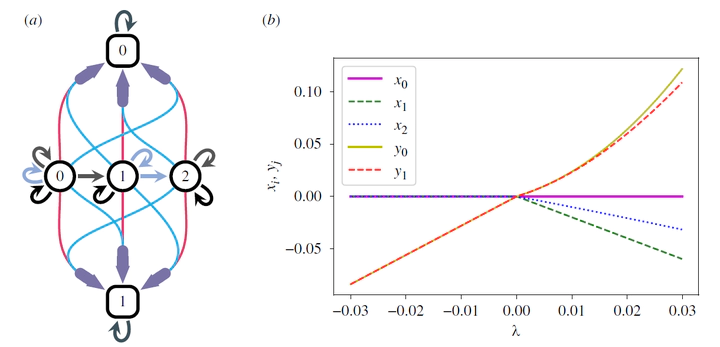Talk: Reluctant Synchrony Breaking in Directed Hypernetworks
 A hypernetwork that supports an unusual “reluctant” synchrony breaking local steady-state branch. Representation of the hypernetwork (a) and numerically obtained bifurcation diagram (b).
A hypernetwork that supports an unusual “reluctant” synchrony breaking local steady-state branch. Representation of the hypernetwork (a) and numerically obtained bifurcation diagram (b).Abstract
Interconnected real-world systems oftentimes contain non-pairwise interactions between agents referred to as higher order interactions. Countless works in recent years have highlighted how this structural feature crucially shapes the collective behavior. The higher order interaction structure can be encoded by means of a hypergraph or hypernetwork. This talk will focus on dynamics of such hypernetworks. We observe that simple model equations give rise to obstructions to the design of some heteroclinic structures in phase space when the interactions are undirected, whereas their directed counterparts do not. This leads us to define a very general class of directed hypernetworks and corresponding maps that respect a given interaction structure, so-called admissible maps. For this class, all robust patterns of (cluster) synchrony that a given hypernetwork supports can be classified. Interestingly, these are only determined by higher degree polynomial admissible maps. In particular, unlike in classical networks, cluster synchronization is a higher order, i.e., nonlinear effect. This feature induces a novel type of “reluctant” synchrony breaking bifurcation when a high order tangency of the solution branch to a non-robust synchrony space causes formerly synchronous nodes to separate unusually slowly as exemplified in the figure.